The FSP Hydro G 750W Power Supply Review
by E. Fylladitakis on March 3, 2016 8:00 AM EST- Posted in
- PSUs
- Cases/Cooling/PSUs
- 750W
- FSP
- Modular
External Appearance
The Hydro G PSUs use a slightly modified standard steel chassis that is sprayed with satin black paint. The satin paint has an excellent finish but it also is highly prone to fingerprints, so much so that in systems where aesthetics matter and the PSU is visible, the unit will probably need to be cleaned using a soft cloth after first installing it inside the case. A sticker with the electrical specifications and certifications of the PSU can be found at the top side of the chassis. On both of the PSU's sides, we find the simplistic blue stickers pre-attached. Thankfully, the side sticker facing the left side panel of the case will always be upright, regardless whether the PSU has been installed with the fan facing up or down.
FSP is using a diagonal dual parallel wire finger guard for the fan. Diagonal Cassini oval openings also form the exhaust opening at the rear of the PSU. According to the company, this formation is supposed to reduce aerodynamic drag, which in turn reduces turbulence, resulting to lower noise.
The front of the PSU is similarly simple, with an abstract design based on more diagonal Cassini ovals to the upper right corner of the surface.
Internal Design
The airflow needs of the Hydro G PSU are covered by a 135 mm fan from Power Logic. It is a very high quality model using a Hydro Dynamic bearing, is capble of reaching 2000 RPM. At that speed the maximum airflow would be around 111.1 CFM.
Obviously, the Hydro G PSUs were designed and built by FSP themselves, without any other OEM behind it. It is a new but simple design, using a resonant LLC converter formation, with a half-bridge primary inversion stage and a 12V-only conversion at the secondary of the transformer, with DC to DC conversion circuits for the generation of the minor voltage lines. The input filtering stage consists of four Y capacitors, two X capacitors, two filtering inductors and one surge-suppressing MOV.
Meanwhile the cooling design is a little strange for a higher capacity 80Plus Gold PSU. A sizable heatsink covers the APFC and primary inversion side active components, but relatively tiny heatsinks are utilized for the secondary side conversion transistors. The reason for this is that the conversion components that FSP is using at the secondary, found at the underside of the main PCB, have very low conversion losses. Furthermore the overall thermal design of the Hydro G has the chassis itself doubling as a heatsink. Do not be alarmed if the body of the PSU itself gets quite warm during operation, it only means that the cooling system works the way it is supposed to. This way FSP can deliver a quieter PSU with lower internal thermal needs, shifting a small part of the thermal load directly to the exterior of the unit through its chassis. The catch is that this approach is going to slightly increase the thermal load of the system itself, although the increase should be minimal considering the volume and airflow of the average ATX case.
FSP advertises this unit as having "100% Japan made e-caps". By "e-caps", the company obviously means electrolytic capacitors. Sure enough, the two main 420V/330μF APFC capacitors are supplied by Nippon Chemi-Con. The same manufacturer supplies most of the electrolytic capacitors found inside this unit, with the exception of a few Rubycon products. All of the polymer capacitors are supplied by Teapo, which is a reputable Taiwanese manufacturer.


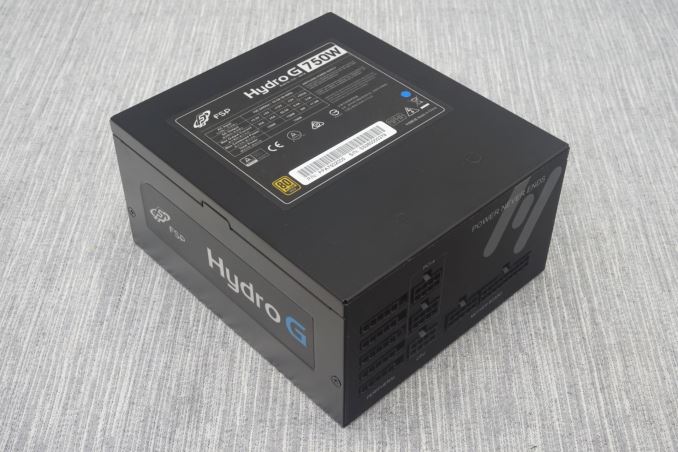
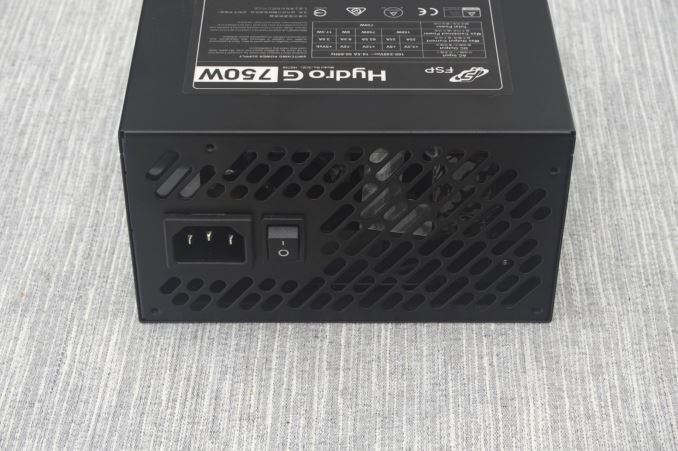
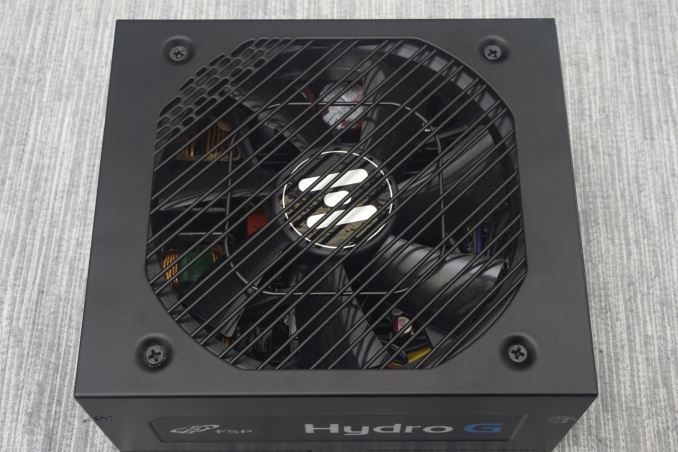
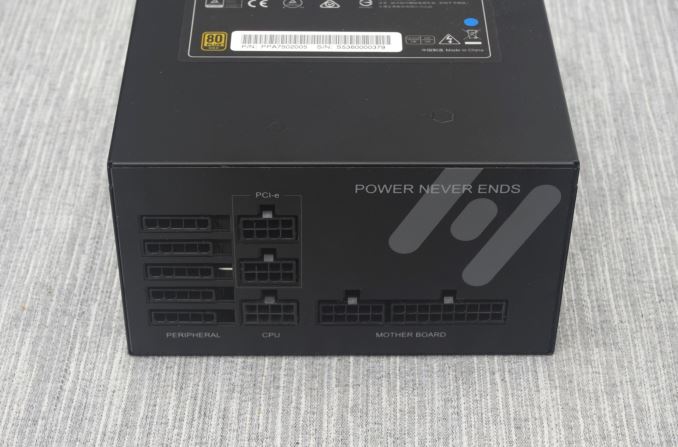
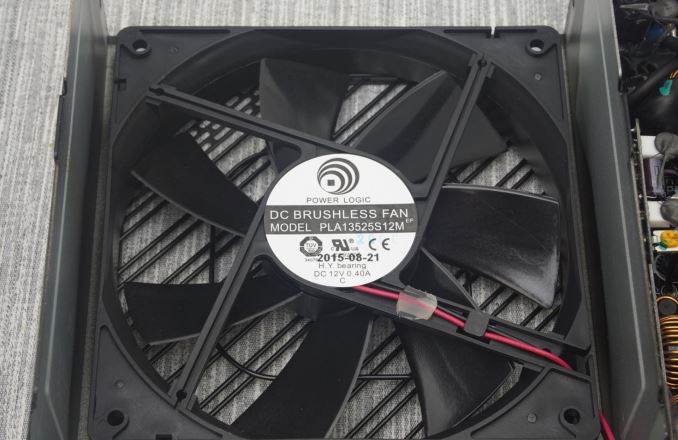
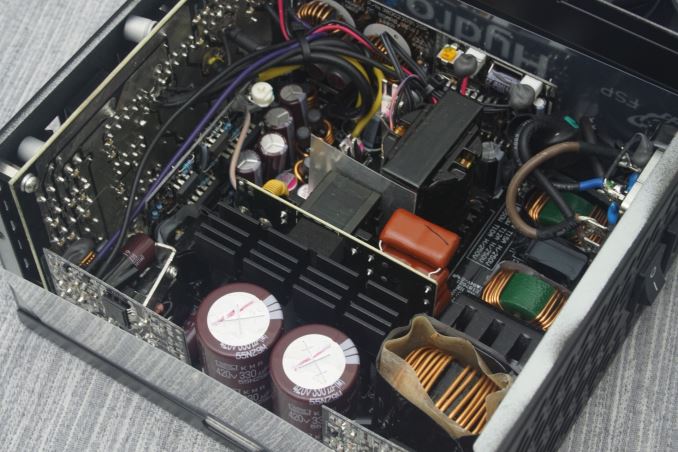
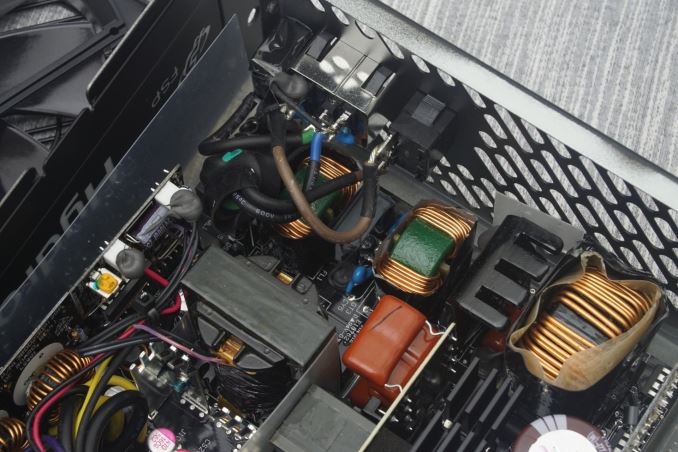
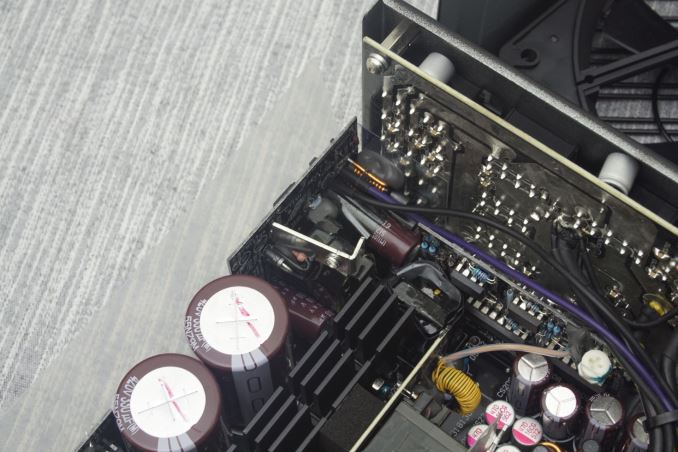
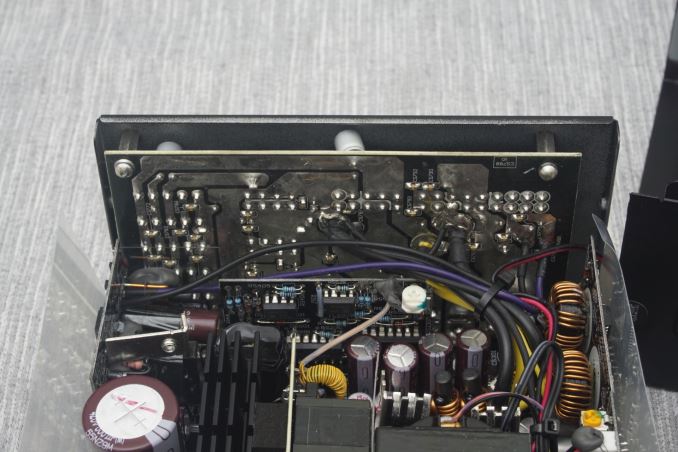
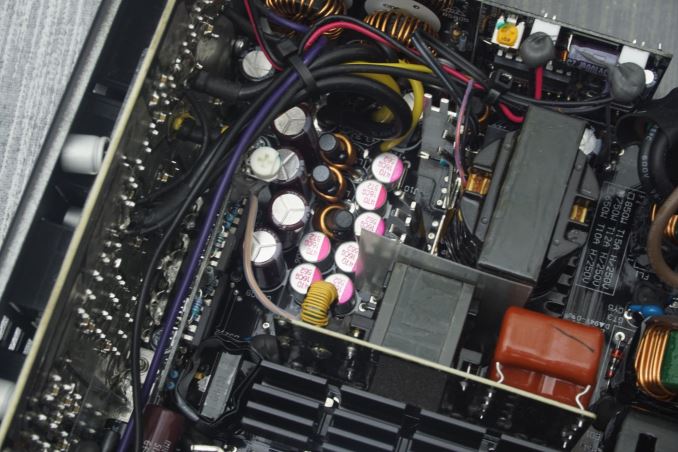








22 Comments
View All Comments
blahsaysblah - Thursday, March 3, 2016 - link
Not much seems to have changed with the actual PS design forever.PS + UPS in one(just a few minutes to shutdown safely and real surge protection and incoming voltage regulation).
PS combined with a CPU water cooler. They are usually in a key airflow spot in a lot of cases. Reduce noise and make it easier to keep cold air cold by combining two exhausts into one.
kaidenshi - Thursday, March 3, 2016 - link
"PS + UPS in one(just a few minutes to shutdown safely and real surge protection and incoming voltage regulation)."Indeed, I've never understood why we can't have a PSU/UPS combo in a full size PC, especially given the energy density of modern Lithium based rechargeable batteries. Maybe it's a safety issue? But then we've had Lithium batteries in laptops for about 20 years, that's a long time to perfect a design.
nathanddrews - Thursday, March 3, 2016 - link
I think you would both be interested in checking out some of the 5.25" battery backup units on the market. They are a bit niche and hard to find, but basically they are like what you are describing. The battery pack fits in a 5.25" drive bay and the PSU is connected through it.I think the main reason internal UPS aren't popular (outside the server market) is that desktop users have many other external devices connected that may also need to be powered down safely.
FuzionKore - Tuesday, March 8, 2016 - link
Exactly. Why invest in a PSU/UPS combo if your monitor dies anyways and you can't save what you were working on? The money is almost always better spent on a discrete UPS, unless somebody makes a unit with a power output for a monitor.5th element - Thursday, March 3, 2016 - link
Lithium ion batteries need to be kept cool otherwise their performance suffers quite badly. Inside a PSU is about the worst place you could put one.Wardrop - Friday, March 4, 2016 - link
How are you going to save your work and shutdown when your monitor is off? There's also often more to a PSU than just a battery. Adding all that to a PSU would make it quite expensive and extremely niche.Wardrop - Friday, March 4, 2016 - link
Replace the first "PSU" with "UPS".Murloc - Thursday, March 3, 2016 - link
a battery is pricey and useless to most people. What most people could use is a PSU able to survive a brown-out.But even then, it's probably more worth it to replace the PSU if something happens. I've had 1 PSU die on me in my whole life.
xenol - Monday, March 7, 2016 - link
If you're going to have a UPS anywhere, it should be at the mains. As another mentioned, what's the point if you can't see what you're doing?Also wouldn't want water anywhere near a PSU.
asmian - Thursday, March 3, 2016 - link
So it's called 'Hydro', but it's not water-cooled. Apart from generating click-bait product names, what on earth is their marketing team smoking?